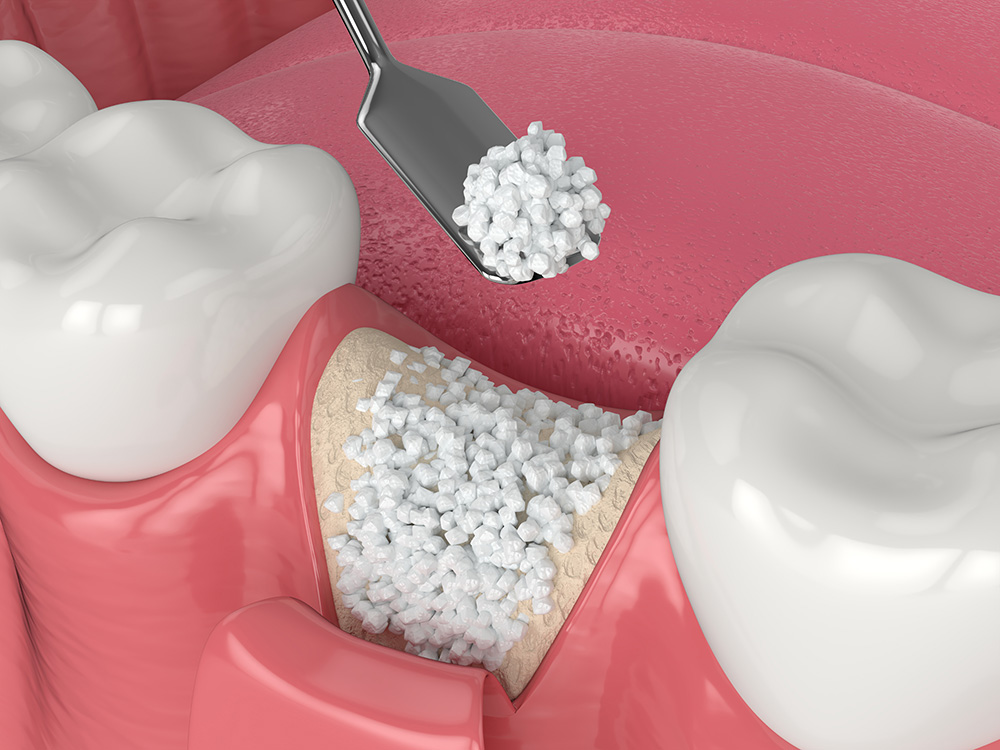Bone grafting is a common procedure in dentistry that plays a crucial role in restoring oral health and function. This technique involves the transplantation of bone tissue to repair and regenerate areas of the jaw that have suffered from bone loss. Understanding why bone grafting is necessary and the various types of grafts available is essential for those facing dental challenges.
Dental implants are quickly becoming one of the most popular methods of tooth replacement. In fact, they might be superior to other options, like a partial denture or a bridge.
However, the dental implant surgery necessitates careful attention and evaluation, particularly in terms of the quality of the bone where the implant will be placed. This is where bone grafting in St. Albert comes in.
Why bone grafting?
There are numerous methods for performing dental bone grafting, but the core operation is the same: An oral surgeon or dentist makes an incision in the jaw and grafts (attaches) additional bone material to the jaw. A dental bone graft is typically performed when a person has lost one or more adult teeth or has gum disease. Both of these disorders can result in jaw bone loss.
Tooth Loss and Bone Resorption
- When a tooth is lost, the underlying bone that once supported it begins to resorb.
- This resorption can lead to structural changes in the jaw, affecting facial aesthetics and causing difficulties in fitting dental prosthetics.
Preparation for Dental Implants
- Dental implants require a sturdy foundation for successful integration.
- Insufficient bone density or volume in the jaw may necessitate bone grafting near you to create an optimal environment for implant placement.
Trauma or Disease-Induced Bone Defects
- Accidents, injuries, or diseases can result in significant bone loss in the oral cavity.
- Bone grafting helps reconstruct these defects, facilitating improved oral function and aesthetics.
Types of Bone Grafts
The type of bone grafting you require will be determined by the state of your jaw bone.
Autografts:
- Involves using the patient’s own bone, often harvested from the hip or jaw.
- Considered the gold standard due to its compatibility and ability to stimulate natural bone growth.
Allografts
- Utilizes bone from a donor, typically processed and sterilized to eliminate the risk of disease transmission.
- Offers an alternative when using the patient’s own bone is not feasible.
Xenografts
- Involves using bone from animal sources, often bovine or porcine.
- Processed to remove organic materials, leaving behind a scaffold for new bone formation.
Synthetic Grafts
- Composed of biocompatible materials like hydroxyapatite or tricalcium phosphate.
- Provide structural support and gradually integrate with the patient’s natural bones.
Bone Grafting Procedure
Bone grafting surgery is a highly specialized operation. Your vital signs will be examined and anesthesia will be administered before your dentist in St. Albert begins. Your dentist will sterilize the surgery site once the anesthesia has taken effect.
A cut is made in the gum. This is typically kept as small as possible in order to avoid disrupting or damaging more tissue than is necessary. This incision allows your dentist to gain access to the bone beneath which the graft will be placed.
Consultation and Evaluation
- A thorough examination, including imaging studies, helps determine the extent of bone loss and the appropriate grafting technique.
Graft Placement
- The selected graft material is placed in the deficient area, promoting new bone growth over time.
Healing and Integration
- Patience is key as the graft integrates with the existing bone, a process known as osseointegration.
Postoperative Care
- Following specific postoperative instructions helps ensure a smooth recovery and optimal outcomes.
Booking an appointment,
Bone grafting in dentistry is a transformative procedure that addresses various challenges, from tooth loss to bone defects. By understanding its importance and the diverse grafting options available, individuals can make informed decisions about their oral health. Consultation with our Jensen Lakes Dental dental professionals is crucial for personalized treatment plans and successful outcomes.

